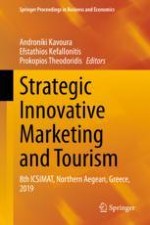This book covers a very broad range of topics in marketing, communication, and tourism, focusing especially on new perspectives and technologies that promise to influence the future direction of marketing research and practice in a digital and innovational era. Among the areas covered are product and brand management, strategic marketing, B2B marketing and sales management, international marketing, business communication and advertising, digital and social marketing, tourism and hospitality marketing and management, destination branding and cultural management, and event marketing. The book comprises the proceedings of the International Conference on Strategic Innovative Marketing and Tourism (ICSIMAT) 2019, where researchers, academics, and government and industry practitioners from around the world came together to discuss best practices, the latest research, new paradigms, and advances in theory. It will be of interest to a wide audience, including members of the academic community, MSc and PhD students, and marketing and tourism professionals.
